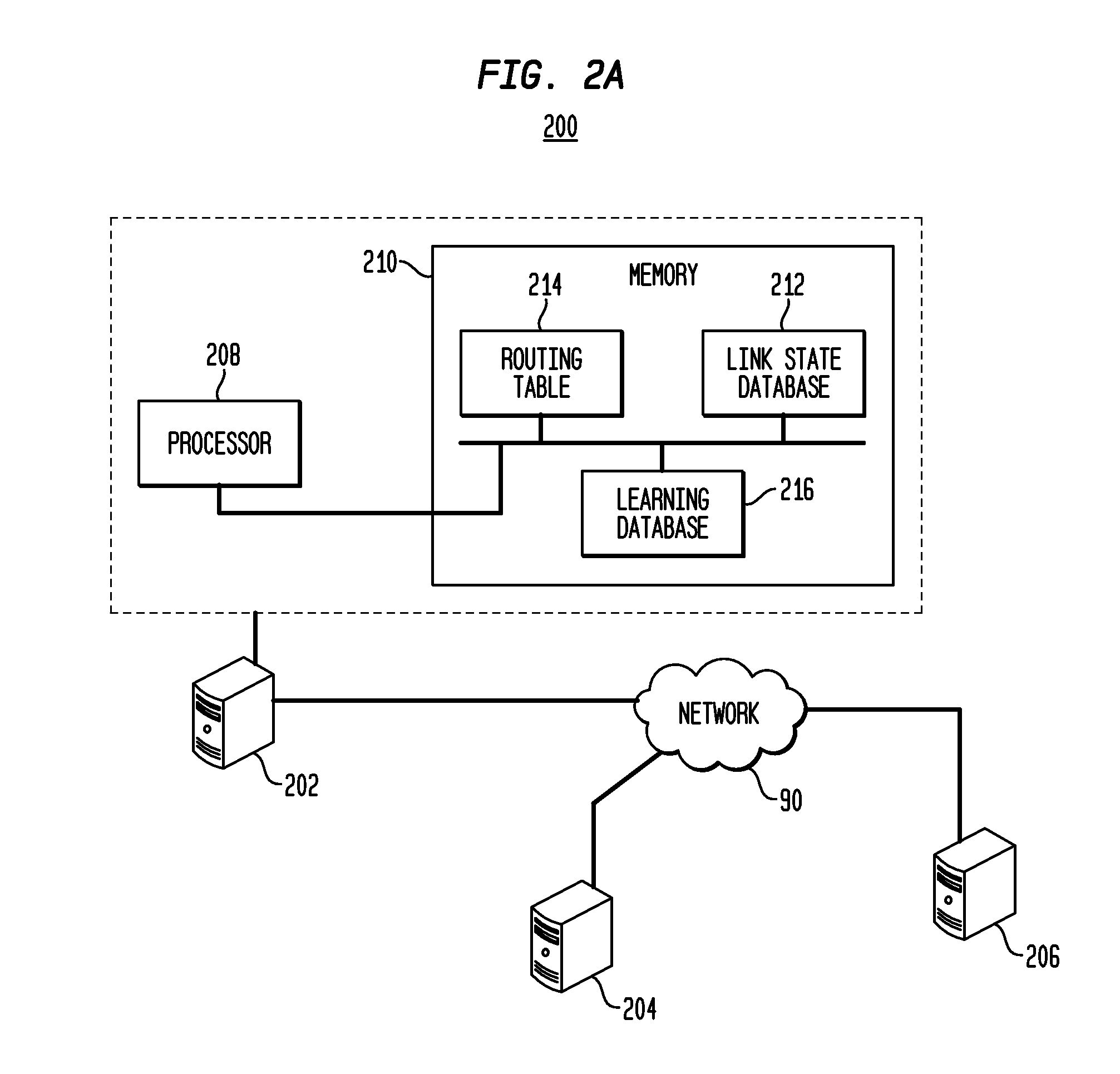Hybrid Learning Component for Link State Routing Protocols
a learning component and link state technology, applied in the field of adaptive routing systems and methods, can solve the problems of limiting the overall network capacity, wasting network capacity, and most networks not being able to support as many data flows as possibl
- Summary
- Abstract
- Description
- Claims
- Application Information
AI Technical Summary
Benefits of technology
Problems solved by technology
Method used
Image
Examples
Embodiment Construction
[0050]Aspects, features and advantages of the system and method will be appreciated when considered with reference to the following description of exemplary embodiments and accompanying figures. The same reference numbers in different drawings may identify the same or similar elements. Furthermore, the following description is not limiting; the scope of the invention is defined by the appended claims and equivalents.
[0051]In accordance with aspects of the system and method, a network node in a communication network maintains a routing table that contains paths to all reachable destination nodes in the network. The network runs a link state routing protocol. The network node receives periodic disseminations of link state information from neighboring nodes in the network. The link state information includes neighboring node identity and link cost metrics. The network node calculates the initial routing paths based on the received link state information by using a link state routing al...
PUM
 Login to View More
Login to View More Abstract
Description
Claims
Application Information
 Login to View More
Login to View More - R&D
- Intellectual Property
- Life Sciences
- Materials
- Tech Scout
- Unparalleled Data Quality
- Higher Quality Content
- 60% Fewer Hallucinations
Browse by: Latest US Patents, China's latest patents, Technical Efficacy Thesaurus, Application Domain, Technology Topic, Popular Technical Reports.
© 2025 PatSnap. All rights reserved.Legal|Privacy policy|Modern Slavery Act Transparency Statement|Sitemap|About US| Contact US: help@patsnap.com



